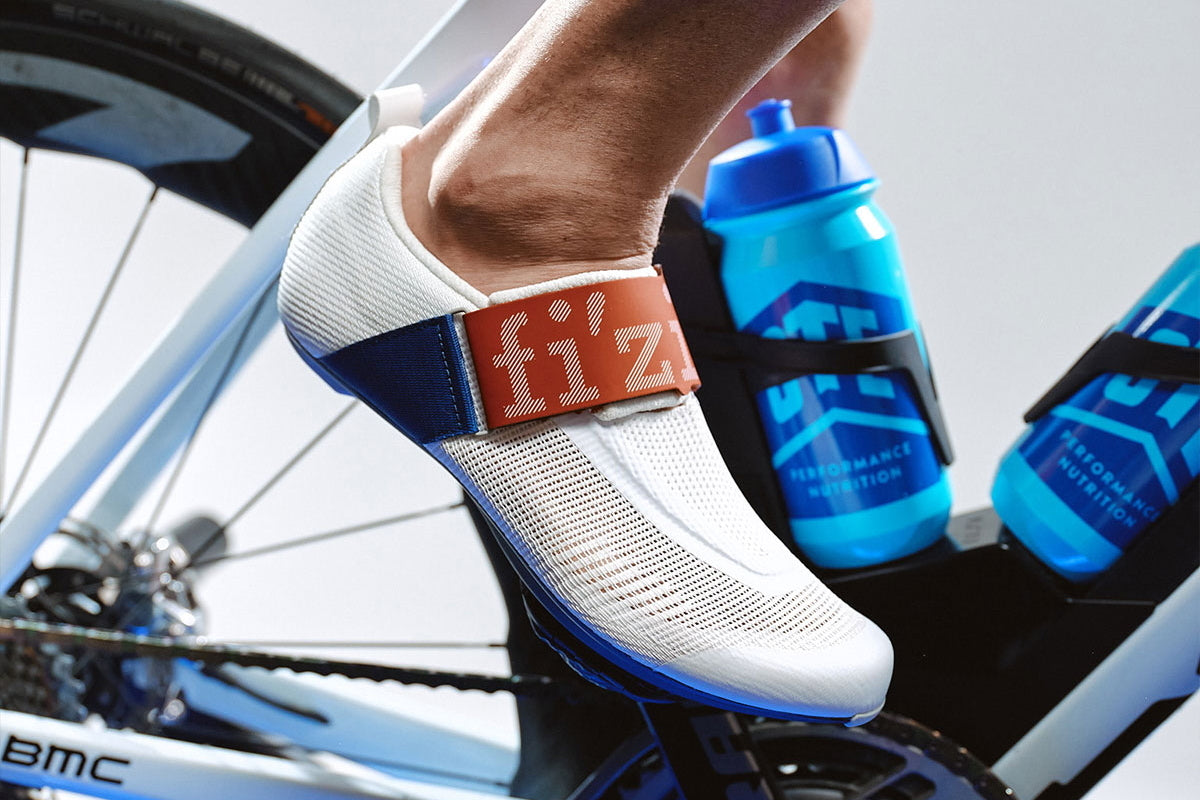Ein Detail mit viel Einfluss: die Einstellung der Pedalplatten hat eine große Bedeutung für die Kraftübertragung und Beinachsenstabilität beim Pedalieren. Eine ungenaue oder fehlerhafte Position kann zu Beschwerden und gar Verletzungen führen. Ob die Positionierung vorne, mittig oder hinten eine Auswirkung auf die Kraftübertragung hat, zeigen wir euch in diesem Beitrag.
Einstellungsmöglichkeiten
Die richtige Positionierung der Cleats/Schuhplatten unter den Radschuhen kann einen leistungssteigernden Effekt haben. Bei den meisten Pedalsystemen können die Cleats in drei Ebenen (Vorne/Hinten, Links/Rechts und Rotation) individuell positioniert werden. Ziel dieser Positionierung ist es eine effiziente Kraftübertragung auf das Pedal zu ermöglichen.
Eine optimale Effizienz wird erreicht, wenn sich das Zehengrundgelenk exakt über der Pedalachse befindet. So werden die Kräfte aus der Bein- und Hüftmuskulatur direkt über die Gelenkachsen auf das Pedal weitergeleitet. Studien aus dem Radsport zeigten jedoch, dass eine Cleats-Positionierung etwas weiter hinten einen positiven Effekt auf die Beinbelastung hat.
Neue Studie
Zwei schwedische Wissenschaftler haben nun überprüft, ob dies auch für den Triathleten für das Radfahren bzw. das nachfolgende Laufen von Vorteil ist. Die Probanden mussten dazu jeweils ein 30-minütiges Radfahren und einen anschließenden 5km Lauf absolvieren – einmal mit Cleats in der traditionellen Position und einmal mit weiter hinten positionierten Cleats. Die Ergebnisse zeigen jedoch keinen Unterschied in der Belastung beim Radfahren und in der erzielten Laufzeit. Lediglich das Lauftempo auf dem ersten Laufkilometer war unterschiedlich. Überraschenderweise war hier aber die traditionelle Position im Mittel 2,1% besser.
Fazit
Ein Verschieben der Cleats-Position nach hinten hat, zumindest auf der Sprintdistanz, keinen Effekt auf die Leistung. Es sollte sogar eher eine traditionelle Cleats-Position gewählt werden.
Unsere Empfehlung: Beim Bike Fitting kümmern sich unsere Radspezialisten nicht nur um die optimale Einstellung der Schuhplatten, sondern um die gesamtheitliche Optimierung der Sitzposition.




















